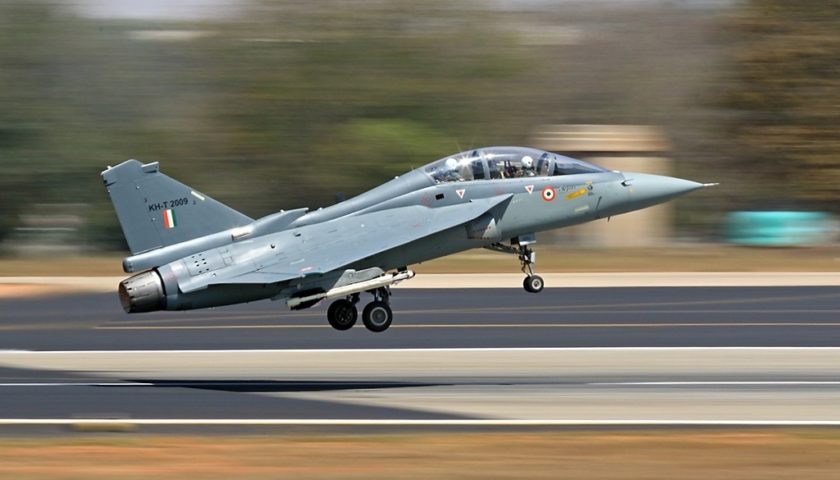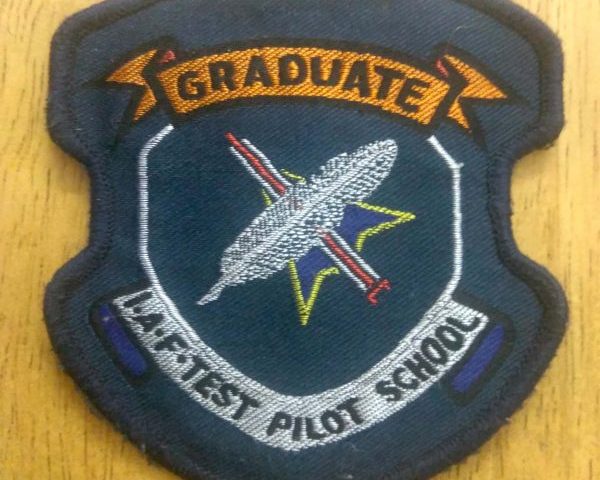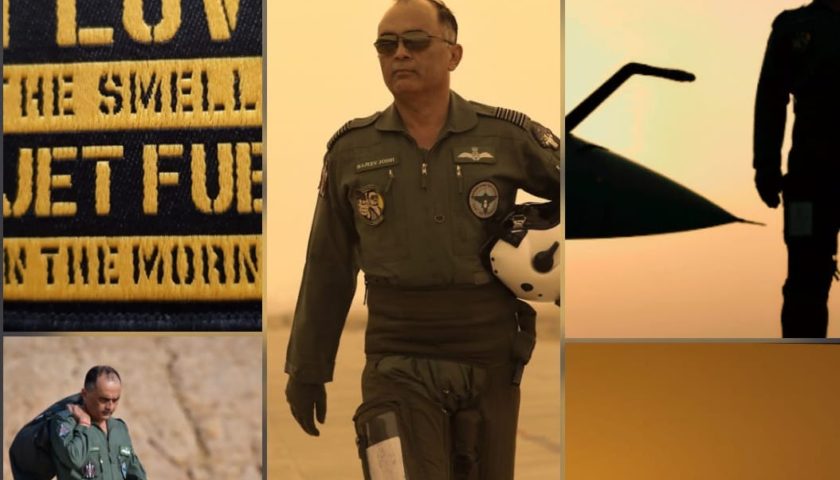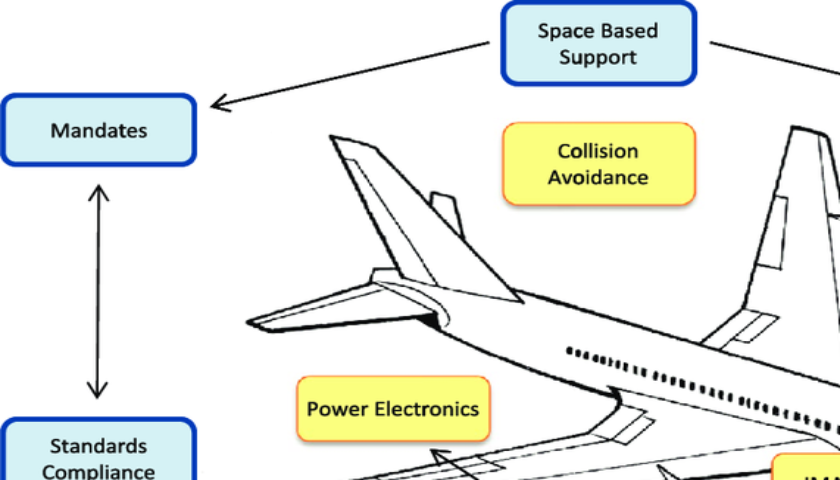Tejas is an Indian single-engine, fourth-generation, multirole light fighter designed by the Aeronautical Development Agency (ADA) in collaboration with Aircraft Research and Design Centre (ARDC) of Hindustan Aeronautics Limited (HAL) for the Indian Air Force and Indian Navy. It came from the Light Combat Aircraft (LCA) programme, which began in the 1980s to replace India’s ageing MiG-21 fighters. In 2003, the LCA was officially named “Tejas”.
This blog is not about the aircraft or its performance/capability or the programme and its management. This blog is about the test pilot in the cockpit and his experience. We will meet one of the test pilots who had long association with the project. I have given you the preamble and now leave you in safe hands of Group Captain Rajeev Joshi (Retd).
“Over to you Joe”.
“I am Group Captain Rajeev Joshi (Retd). I was born in Agra on 27 Nov 71, to a family of Indian Air Force, if I may say that…. My father was posted at AF base at Agra. By then, the Indo Pak war had broken out, and AF Base Agra was bombed on the night of 03 Dec 71. The families of AF base Agra that were still around in the base, including mine, were living in trenches. The family joke on me goes on to say that the little me, all of six days old, slept peacefully in our trench through the bombing. However, after that, when neighbours from adjoining trenches came up and called out to ask for each other’s wellbeing, I woke up with a start and started crying!!! That, I guess, started my tryst with my eventual destiny- as a fighter pilot in the Indian Air Force…..”
“Sorry to interrupt you, Joe, that’s a beautiful prelude, however, let’s leave the formal introduction to the end. So here comes my first question. Get ready.’
- How long has been your association with Tejas LCA?
Tejas has been a very long journey. Many designers, engineers, technicians and pilots have contributed to the project. I joined the National Flight Test Centre in 2016 as an experimental test pilot. National Flight Test Centre (NFTC) is a premier flight test centre of the country, under the aegis of Aeronautical Development Agency (ADA). The charter of NFTC is to be a flight test centre for indigenous fighter program, in the present context the LCA Tejas.

- Can you explain the different stages in the design and development of fighter aircraft? At what stage does test crew get involved into the project?
Essentially, the task of development starts from the user (customer), in this case, the Indian Air Force, issuing a request for information for an aircraft that the service feels that it needs in the upcoming future. In case of the Tejas LCA, the requirement projected by the IAF was for the development of an indigenous fighter aircraft, in consultation with the government. Hence the IAF issued a set of requirements in 1985, called Air Staff Qualification Requirements, for a combat aircraft that it would need to serve its requirements in the future. This was issued to ADA, which was an intergovernmental agency set up for this purpose. Thus, this marked the first stage of development of the indigenous fighter aircraft that the LCA came to be.
The development agency would then study the requirements projected by the service and come up with its proposal prepared with the help of designers and scientists. This could be in the form of a technical report which would be assessed by a technical evaluation committee constituted by the user (IAF). This could be roughly equated to saying that the “blueprint” prepared by the agency would be assessed against numbers required by the service. These numbers would be broadly in the regime of pure physical performance demanded by the service, requirements from the avionics and weapon systems needed to be installed on the aircraft, the ground and associated role equipment and the assessment of projected reliability and robustness. The association of test pilots and test engineers starts from this second phase. While the number crunching and assessment is the domain of design specialists, the critical operational viewpoint is provided by the test crew. These activities are not watertight and compartmented but are carried out in close cooperation with each other. In that sense, the test crew becomes the connecting link between the design and operations. With the second stage over, it is time to move on.
After service HQs approve of the TEC report, the design agency and production agency are asked to provide a techno-commercial proposal that would pave the way for the signing of a contract between the Government and the production agency. However, in case of the Tejas LCA this phase came several years after the commencement of the program, as it was a developmental program with significant indigenous inputs into critical technologies which had to be developed ab initio. This is where the symbiotic connect between the test crew and design house assumes importance. NFTC was set up for the LCA under the vision of our ex-President, Dr APJ Abdul Kalam. He recognised that the task of the nature of LCA development had to have flight test and design expertise of the nation in one organisation. Hence NFTC was set up as a centre under ADA. For the Tejas, the interim period was utilised for exploring the developing technologies in the field of flight control laws, avionics, hydraulic systems, electrical systems and engine control systems.
With the work of many years and the design and development maturing to a stage where it was considered that the aircraft had achieved its Initial Operational Clearance, it was time for the design and manufacturing agencies to go-ahead for the signing of the contract for the supply of the aircraft to the IAF. This is an important juncture and may be called as the third stage. For the LCA, the IOC phase was followed by Final Operational Clearance and the subsequent contract for the supply of aircraft with all capabilities having been achieved.
This is followed by the production stage, where the design and development of the aircraft has been frozen, and high-speed production of the final deliverable aircraft commences from the production agency. In this phase also, test crew are actively involved but in a task of slightly different nature. The testing at this phase involves the production aircraft before they are delivered to the user. However, this testing is not developmental or experimental in nature, and consists of testing the produced aircraft to a pre-defined test schedule, to ensure that they are in conformity with the laid down production requirements.
- Can you explain for our readers what is Initial and Final Operational Clearance for any aircraft? Is this the normal milestone for aircraft development?
Initial Operational Clearance and Final Operational Clearance are methodologies used to define stages of development of a developmental aircraft. The user (IAF) would lay out all the requirements that are to be fulfilled by the aircraft. As is the case with complex systems, it may not be possible to achieve all of this at one time. Hence, phases are defined in consultation with the user service in which the capabilities are divided into “Initial” and “Final” clearance. The minimum requirements that are needed to clear operational entry for the aircraft are defined into IOC and the remaining into FOC. This is not a mandatory requirement for a developmental aircraft. Complex projects like LCA may need it for better management. In a way, it helps in the operationalisation of the system, as particularly important inputs are obtained from field units who start exploiting the system in IOC capabilities. As the operational field units exploit the aircraft as a combat platform, which is different from usage during controlled conditions of prototype development, the aircraft gets tested in demanding field conditions. LCA program has followed the phases of IOC and FOC.

- For aerial combat, different types of missiles are used like CCM and BVR. What are different types of air to air missiles like Beyond Visual range and Close combat missile? Weapon integration on fighter is the most important stage, what is your view on that?
Missiles are now the primary weapons for air to air combat on fighter aircraft. Going historically, the first forays into the field of air to air missiles were in the field of radar-guided missiles. Early American and Soviet models, the Falcon and the AA-1 for the Soviets relied upon radar guidance, although not in the same manner. The radars were limited in performance, and so were the missiles. Little success could be attributed to them. First positive developments in the field of air to air missiles were in the field of heat-seeking missiles, for both American and Soviet designers. These utilised infra-red seekers and were thus limited in the maximum range that they could lock on to the target aircraft. For these missiles, the pilot essentially visually manoeuvred to get into the rear quarters of the enemy aircraft and then made his heat-seeking missiles to lock on to the hot jet exhausts of the enemy aircraft in front of him. For the initial part, this was like what the pilots did with aircraft which were equipped with machine guns and cannons only. The advantage that was obtained was that the heat-seeking missiles could target the enemy aircraft at ranges longer than guns/cannons of older time and were of the “fire and forget” kinds. This meant that once locked on to the target aircraft and having fired by the pilot, the missile did not need to be tracked and could continue to home on towards the target till hitting it. However, being essentially infra-red guided, the ranges till which these could be launched were limited to “visual ranges”. Hence these types of missiles came to be called close combat missiles (phrase “CCM”).
Radar technology was limited by the range and complexity of the equipment. As radar technology advanced, the ranges at which a lock on to target aircraft could be achieved improved. With this came the requirement of being able to target aircraft at longer and longer ranges. This reached a stage where the distances were such that targets were “beyond visual range” (hence the phase BVR) for human eyes and were engaged while being seen only on the radar. For this task were needed missiles which could go farther and be guided by aircraft radar as the human eye could not guide them to lock on. While these are definitions in the strict sense, this is how the terms CCM and BVR came to be. The development has not been watertight and compartmentalised. The ranges for BVR missiles now far exceed simple visual ranges of the human eye and are more governed by radar/missile seekers and kinematics. Similarly, CCMs are now performing beyond visual ranges too, and are becoming more and more capable of handling highly dynamic manoeuvring targets. In fact, the heat seekers of current CCMs are capable of handling long-range targets also. There is a generation of missiles available that can switch from CCM to BVR with the change of seeker heads. Hence, the term “Close Combat Missile” and “Beyond Visual Range Missile” are traditional in nature, not rigidly defined and convey a sense more than a definition.

As an example, the Tejas LCA is currently equipped with R 73 E missile (Russian origin) as the CCM and Derby missile (Israeli origin) as the BVR. It planned to be equipped with the ASRAAM CCM and Astra BVR (Indian origin) also in the near future.
Weapon integration is indeed the most important phase in the development of a fighter aircraft. This is not to say that other phases are less important, just to bring out that the purpose of fighter aircraft is to excel in combat and weapon delivery. An aircraft that flies and performs exceptionally well, but fall short of good weapon delivery, would be better called an aerobatic aircraft than a fighter. It is in this manner that I say that the front end of the fighter aircraft development is its ability to be a successful weapon delivery platform.
- Can you tell readers about the trial you were involved which lead to FOC of Tejas aircraft?
The journey of Tejas has been a long one, with professionals of exceptional calibre having contributed to it. My contribution as a professional has been towards some of the FOC activites.
BVR missile firing: Integration of a BVR missile on the Tejas was one of the requirements for the FOC. The Team Tejas had to demonstrate integration of the BVR with the on-board radar and weapon control system. This was achieved by the successful firing of the BVR in radar guided mode on a pilotless drone in May 17.
Air to Air Refuelling: Ability to refuel the aircraft in the air from the tanker is a multidisciplinary activity which involves integration effort by the airframe system, fuel system, engine systems, mission computers and the flight control system. This was achieved in Sep 18.
- What are the peculiarities of such a trial specially because radar, missile and aircraft were of different origin.
In general, modern equipment such as radars, missiles and weapon control equipment are made to a common integration standard. This means that the systems have the ability to talk to each other over a common protocol. This renders the task of integration easier than what would be the case if it were not so. This was the case in these trials also, as the systems chosen confirmed to the common standard protocol. However this is just the basic and the remaining task of integration does pose challenges if the systems are of different origin. Hence the integration task gets complicated. What needs to be kept in mind that irrespective of the origin of the equipment, the aircraft has to deliver a capability in conformity with the service requirements. All system level specifications are derived from that goal. After the integration on ground simulators and rigs the changes that are needed to be done on system architecture and performance are asked for. Once the performance is satisfactory on the ground it is cleared to be flown for trials. Real world assessment does bring out shortcomings or improvements that need to be done to make it combat ready.
- What are the other aircraft comparable to Tejas in its class? How do you compare them to Tejas in performance?
The Tejas is compared to many aircraft in the world, with a wide variety of opinions as a result. Before we do a comparison, we must be clear of what we are comparing. Like the common phrase goes, attempts to compare “apples to oranges” must be avoided. Keeping this in mind, comparable current fighters are the Swedish Gripen and the JF 17. In the final operational clearance configuration, the Tejas would compare well with both the aircraft. However, I feel that unless specifics are to be compared, it would be incorrect to talk numbers and performance on this forum.
- Test flying is a team job. Could you please elaborate on that.
Indeed it is! If anything in the world of technology is a team effort, it is design/development and testing of fighter aircraft. Very often, we see a person at the end of a successful task, the one who has executed it in the public eye. In the case of fighter test flying, that situation is reached after a sustained effort of planning, design, simulation, testing and flight testing. The team would consist of system-specific designers, integration specialists, clearance/certification agencies and the test flying agency. Within test flying specialisation itself, there are a range of specialists. The business end consists of Test Pilots and Flight Test Engineers. Other specialists include the instrumentation and telemetry engineers who are responsible for instrumenting the aircraft to capture the myriad parameters that are needed to be monitored and real-time linked to the ground set up. Some of these are in the field of photogrammetry who are responsible for setting up high-speed photography of events while flying and its analysis on the ground. All of them get together to deliver success OR failure alike. Reams could be written on this, but let me conclude by saying that like all human endeavours that aim to unshackle the limits of the present into the future, test flying of fighter aircraft is a team job to being with, and remains so till the end.

“Thank you, Joe, for a marvellous insight into one of the most dangerous and demanding job and now we are all eager to hear more about that 7-day old baby and his journey.”
“So Billy, after initial schooling, I joined the National Defence Academy as an Air Force cadet in the 83rd course. Having passed out from NDA in Dec 92, entered the Air Force Academy as a trainee pilot in the 152nd Pilot Course. I was commissioned into the fighter stream of IAF on 18 Dec 93. Moving through an eventful life in the IAF, I entered the IAF Test Pilot School as a Trainee Test Pilot and graduated from the TP school with the 27 Flight Test Course as a fixed-wing test pilot. After having been through several operational tenures with the IAF, I was serving as an experimental test pilot in the National Flight Test Centre on the LCA Tejas program in my last tenure in IAF service. Having served the IAF in different capacities for 26 years, I took premature retirement in 2019 and shifted laterally to HAL to continue working on the LCA upgrade program as a test pilot.”
“I am married to Rachana Joshi, we have a son who is in college and aspires to be a pilot in the IAF.”
Readers, this is not all. Joe has promised to share one more story with us, and that I will bring that out very shortly. Till then. Adios.
Be safe.
Related article: Intrepid Pilot- Test Pilot. Click here to read.
Related article: Flight Test Engineer. Click here to read.
Related article: Air to Air Refuelling: Pilot’s perspective: My story. Click here to read.



